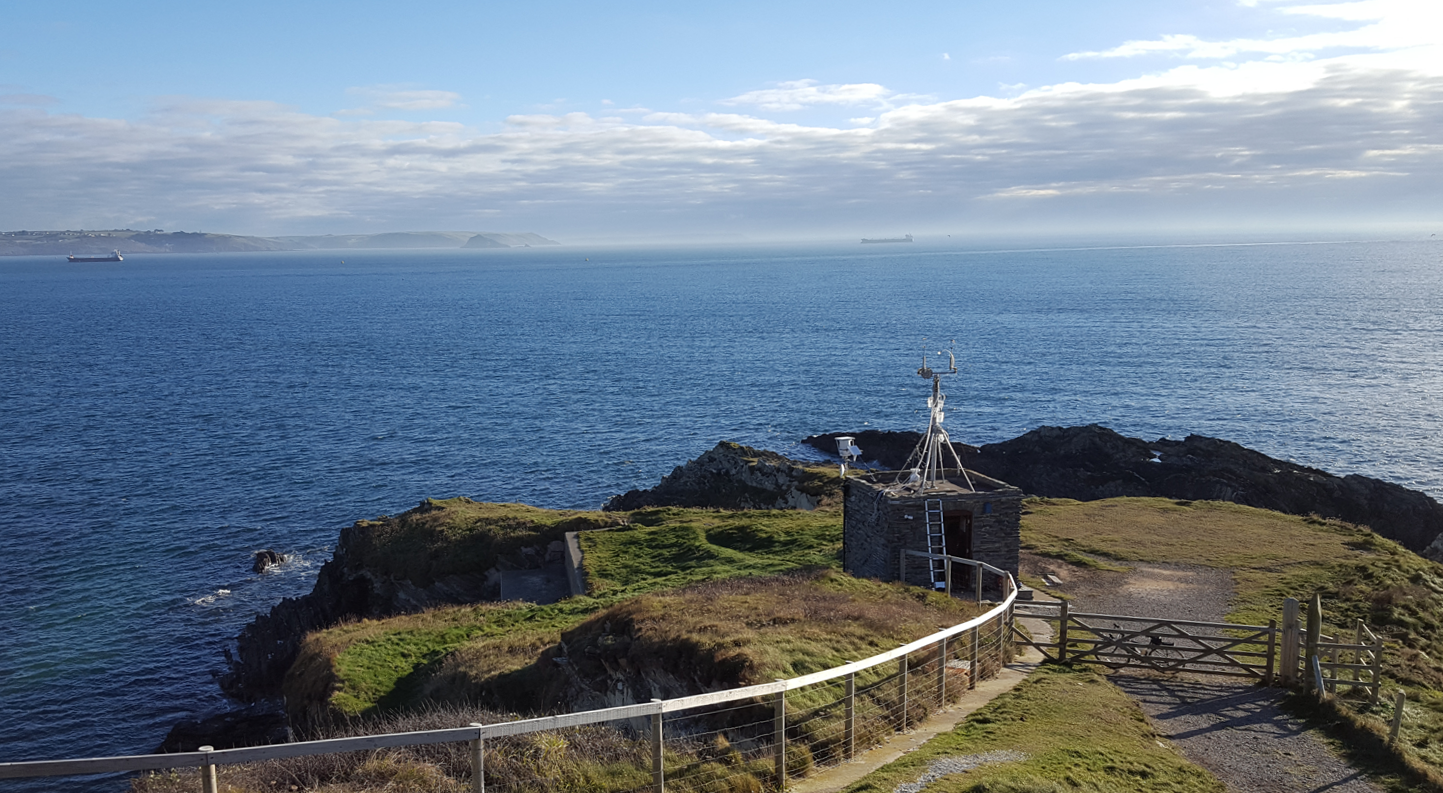Dr Thomas Bell
ppao@pml.ac.uk
Dr Mingxi Yang
ppao@pml.ac.uk
Not Applicable
Calendar

Penlee Point Atmospheric Observatory (PPAO)
As a service to the wider community, the AMOF website “showcases” facilities that are not operated or supported by AMOF.
This is not an AMOF Observatory please do not apply to AMOF for access.
The Penlee Point Atmospheric Observatory (PPAO)
The Penlee Point Atmospheric Observatory (PPAO) was established by the Plymouth Marine Laboratory in May 2014 for long term observations of ocean-atmosphere interaction. The observatory is only a few tens of metres away from the water edge and 11m above mean sea level.
Trinity House owns the Penlee building and allow PML to occupy the site under license so that instrumentation can be protected from the elements. PML is able to access the site thanks to the cooperation of Mount Edgcumbe Estate. We would like to thank the Universities of Plymouth, East Anglia, Leeds, and the National Oceanographic Centre for their collaborative measurements.
To request access to the site, facilities, data and any further information please send an email to ppao@pml.ac.uk
Location and typical winds
At the mouth of the Plymouth Sound, the site (50° 19.08′ N, 4° 11.35′ W) is exposed to marine air when the wind comes from 110° – 240°. Typical southwesterly winds tend to bring relatively clean background Atlantic air. In contrast, winds from the southeast are often contaminated by exhaust plumes from passing ships. The PPAO is in close proximity to marine sampling stations that form the Western Channel Observatory, enabling a better understanding of the ocean-atmosphere coupling.
Measurements at PPAO
Continuous gas-phase measurements at PPAO include concentrations of sulphur dioxide (SO2), ozone (O3), carbon dioxide (CO2), and methane (CH4) in air. Aerosol composition (major ions, organics, and trace metals) and meteorology are also measured. We directly quantify the air-sea transport of CO2, CH4, and aerosols using the state-of-the-art eddy covariance technique. Continuous observations at PPAO also allow us to quantify the impact of anthropogenic activity on the coastal environment as well as the influence of the sea on the nearby land.
Instrumentation Information
- Meteorology:
- Gill Metpak Pro
- 3-dimensional winds:
- Gill R3
- Gill Windmaster Pro
- Continuous gas-phase measurements
- Sulphur dioxide: Thermo Scientific 43i
- Ozone: Thermo Scientific 49i
- Carbon dioxide and methane: Los Gatos Research Fast Greenhouse Gas Analyzer
- Aerosol composition
- Major ions and trace metals: 24hr filter samples collected weekly
The site has also been demonstrated to be suitable for direct quantification of air-sea exchange using eddy covariance technique (the Los Gatos instrument is capable of measuring air/sea CO2 and CH4 fluxes)
For full details visit the PPAO website here →
